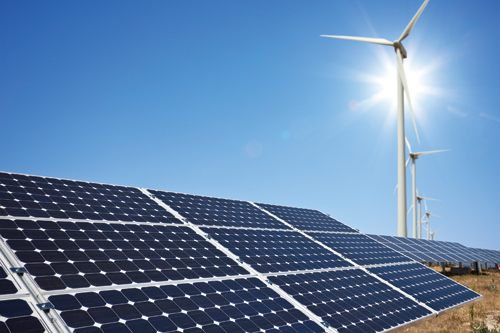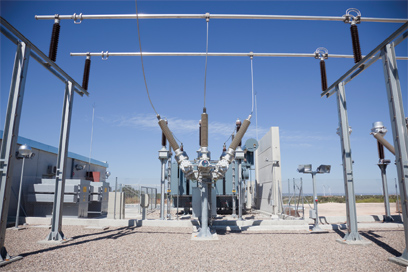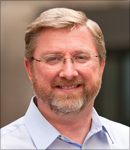Thanks in large part to innovative technologies, environmental awareness and government incentives, renewable energy generation will contribute a significant portion of the total power consumed in the U.S. sometime in the next decade. This raises an important question: How does today’s grid have to evolve to accommodate an operational scenario in which a significant percentage – from 25% to perhaps as high as 50% – of the power being pumped into it depends on how hard and where the wind is blowing and the sun is shining?
The short answer is that the grid has to become more intelligent and evolve toward a more accommodating structure. It has to be capable of managing energy flow dynamically. It has to forecast both load and energy availability simultaneously and deploy the resources to bring them quickly and accurately into balance. It has to move energy back and forth in the distribution system as well as in the transmission system. It will also have to add large-scale energy storage to its list of dependable resources.
The argument for renewables has always been compelling from an ecological perspective, but it has taken decades to make the economic argument and – because of the formidable logistics involved – some utilities still aren’t embracing it. Utilities are onboard with many aspects of the Smart Grid concept, however, and although many challenges must be met that fact will strengthen the case for renewable energy in some interesting ways.
The same sensing, monitoring, analysis and control technologies that utilities find attractive in the Smart Grid will make it possible to handle the challenges of safely and efficiently integrating renewable generation, which is often distributed, has limited capacity, and is weather dependent.

Solar panels, wind farms and other renewable energy sources can
There are three areas in which this “creative tension” between the grid and renewables can be beneficial: A stronger grid, a smarter grid, and a more efficient grid.
Strength in diversity
Distributed generation is a term that is typically applied to power generation resources that are geographically distributed and offer modest or even small contributions to the total power supply. Distributed generation need not come from renewable sources. A diesel backup generator, for example, falls into the distributed category, but is not renewable. Large wind turbine or solar farms that generate hundreds of megawatts are renewable, but not distributed.
The nature of renewable technologies combined with the development path of renewable systems (e.g., rooftop installations), however, puts them in the distributed category. Historically, one concern facing utilities has been implementing bi-directional energy flow in the distribution (69 kV or less) system.
Although bi-directional flow is commonplace on the transmission grid – especially since deregulation made a business out of moving large chunks of power hundreds or thousands of miles – the distribution system in the U.S. is still thought of as being characterized largely by radial, one-way power flow.
What happens when distribution systems go bi-directional? A distributed grid resembles a network similar to the Internet. Power is routed in much the same way that information is routed and controlled. When done on a large scale, this requires new equipment to ensure safety, routing algorithms, distributed – even granularly distributed – monitoring equipment to collect the information, and a communications system overlay to deliver the operations data.
It all sounds impressively difficult. But the truth is that many utilities are already on that road. In order to help ensure uninterrupted power to homes, businesses and factories, many distribution feeders today are “loop-fed”, which means that the customer can receive power from two different substations. It also means that utilities are already dealing successfully with some degree of bidirectional power flow in their distribution systems. Their reasons for implementing loop-fed systems are remarkably similar to the benefits that are expected to accrue from the Smart Grid: more robust and resilient systems that can resist cyber attack, route around outages caused by accidents or acts of nature, and even gracefully accommodate outages due to scheduled maintenance.

Many utilities are already becoming familiar with managing bidirectional
Viewed from this perspective, the addition of renewables tends, if anything, to strengthen the grid rather than make it more vulnerable. Distributed resources give the routing algorithms more options. It could also be argued that distributed resources make the algorithms’ job a bit easier because they are local to the outage.
A staple argument against renewables has been their intermittent nature. Clearly, energy storage solutions are a reasonable answer and energy storage is likely to be an important contributor to the renewable generation solution. But even this is not an absolute requirement because the existence of renewables on the grid simply establishes the first option (or, level of redundancy) for an alternate power source. If the sun is not shining the routing algorithms can look elsewhere for backup power in the case of emergencies.
Data + Intelligence = Knowledge
Most everyone is familiar with the observation that data is not knowledge and its corollary: Intelligence acting on data produces knowledge. Implementing the Smart Grid envisioned by most utilities will require collecting data to measure a number of parameters that basically monitor the grid’s vital signs. Distributed, renewable energy resources are likely to measure a lot of the same parameters just to operate efficiently. That makes them a natural source of reliable, granular and local information. It certainly beats the alternative of installing equipment just to measure the grid’s vital signs.
Another perspective is that fuel diversity sets off a chain of events that makes the grid intrinsically smarter. Start with the fact that utilities want to utilize the least expensive source of energy available to them. Harvested energy – as opposed to that generated with fossil fuels – is increasingly likely to gain the upper hand in the cost per kWh competition, particularly at specific times and places. It already has a clear environmental advantage, which is less and less likely to be dismissed.
It takes a bit of out-of-the-box thinking, but perhaps wind and solar should be perceived as the first source of power instead of an alternative source. Use it when it is available; not just because it can reduce the average cost per kWh once installed and available, but also because it mitigates the need for more power from fossil fuels, which in turn, reduces capital equipment costs.
It is not so much that renewables make for a smarter grid per se, but that including them in the power production mix forces the change in thinking for optimization of grid assets. Fuel diversity also leads to greater grid security and resilience. DoE has defined resilience as the Four R’s, consisting of robustness, redundancy, resourcefulness, and rapidity. The robustness is the inherent strength of the grid; redundancy is having a system with alternate possibilities; resourcefulness is the grid’s ability to mobilize alternatives; and rapidity refers to the speed of recovery. In each of the Four R’s of resilience, renewables can contribute positively to an improved grid when complementary technologies are in play, such as communications and storage.
Grid efficiency
The synergy between what the Smart Grid needs and what renewable sources offer changes the cost/benefit analysis of renewable energy dramatically. By adding a few megawatts in small increments around its grid, a utility could collect valuable information about what’s happening in its distribution network.
In some cases, the information could be very granular. In a 40 MW project now underway in New Jersey, for example, Petra Solar will install 200 W solar panels on utility poles. The project will allow the utility to address its Renewable Portfolio Standard (RPS) requirements while simultaneously investing in Smart Grid technology.
Operational efficiency is not invariably associated with renewable generation. But putting 200 W solar panels on power poles and equipping them with Smart Energy Modules that include micro-inverters so that they can provide real and reactive power for power quality improvement, and communicate with Zigbee wireless technology, provides two new levels of operational efficiency.
The first is real and reactive power that can be controlled and managed through utility-based computers to optimize power efficiency and quality. The second is an ability to have sensors on the network monitoring many aspects of the health of the system (i.e., voltage, frequency, fault current, temperature, and outages), so that the system can be operated more efficiently.
Outage management is another benefit of collecting information from many points on the grid in real time. With information collected at a substation level, utilities can act quickly to stop a local problem – such as a voltage collapse or spike from a small factory – from cascading through a wider part of the system. In other instances, localized renewable energy sources can be brought online to condition power or as an alternative to firing up a 10 MW emergency generating station.
The challenges of diversity
The value of a diverse network may be manifest in theory, but bringing the concept to reality will require hard work and innovative thinking. Some of the salient challenges involve scalability and network topology.
Planning transmission systems is likely to be driven by the location, type of generation, and routing of transmission lines instead of just the needs of the transmission system. In other words, traditional transmission planning was driven by load forecasting, but Smart Grid planning is more likely driven by generation needs. In fact, the advent of deregulation has already put the power industry on that path.
Any future transmission and distribution network with a high percentage of renewables is very likely to have more generation sources than existing networks and this will make scalability a significant factor.
Planners will have to determine (1) the network topology best suited for this new scenario and (2) the effects on system performance and reliability of having a large number of spatially distributed generation sources. It should also be noted that there is no “one-size-fits-all” network topology. What works for East Coast cities with high population density may not be appropriate for areas in western states that have very low population density. Some systems will need substantial energy storage capability while others that have a good deal of spinning reserve will need less energy storage.
Network topology will significantly impact total transmission losses, as well as the performance of the overall network when subjected to disturbances. If the network has a very large number of power sources, the range of possible power-flow configurations will be enormous.
Although all of this will make the performance and reliability problems much more challenging, it will also provide opportunities for designing networks that can outperform traditional networks while also presenting Earth-friendly solutions.
About the Author

Dr. Alan Mantooth is a Fellow of the IEEE, a Professor of Electrical Engineer-ing at the University of Arkansas, the Ex-ecutive Director of the National Center for Reliable Electric Power Transmission and the NSF Center on GRid-connected Advanced Power Electronic Systems. Dr. Mantooth received his B.S. (summa cum laude) and M. S. degrees in electrical engineering from the University of Arkansas in 1985 and 1987, respec-tively, and his Ph.D. degree from the Georgia Insti-tute of Technology in 1990. Dr. Mantooth can be reached at: mantooth@uark.edu.







